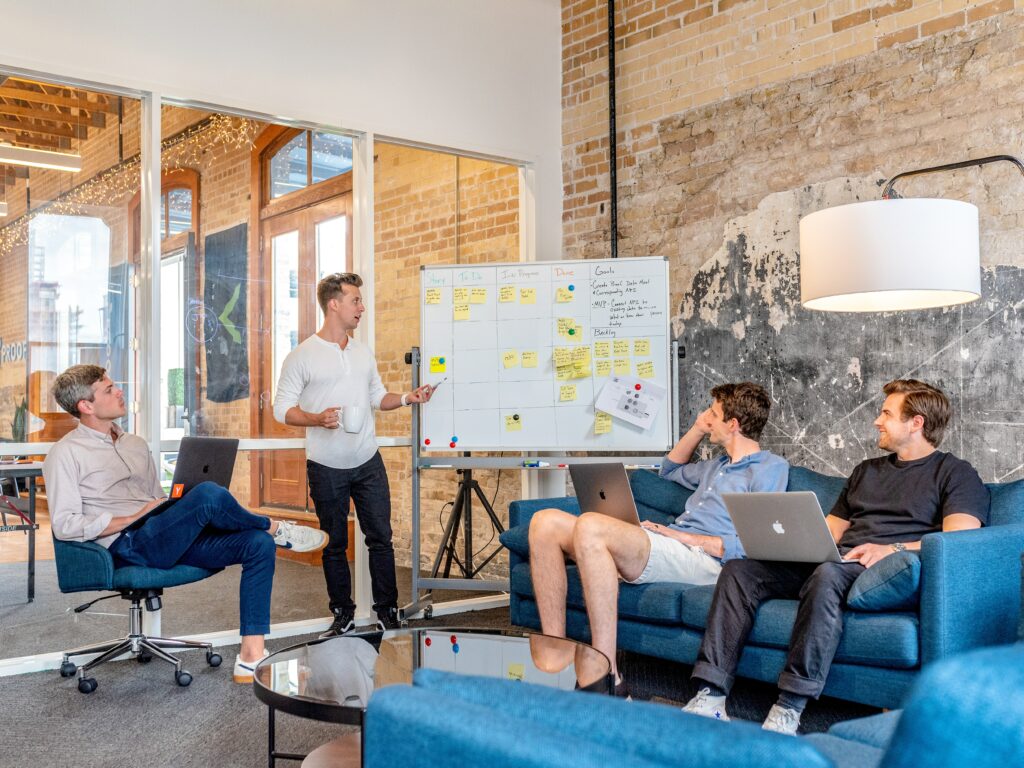Executive Summary
Keeping learners engaged is paramount to success, but there is a perfect storm brewing on the learning and development horizon.
The term “perfect storm” is synonymous with a hypothetical situation that conjures up a picture of inevitability – consequences that could not have been foreseen or prevented – that result in unpredictable outcomes!
So, why am I referencing a ‘perfect storm’ in a discussion about learning?
This article discusses the formation of the perfect storm metaphor in the world of L&D, and examines how this brewing storm is about to change all the current accepted standards, tools, and practices and morph into a new paradigm by which all future educational content, delivery and consumption will be conducted.
In short, the perfect storm is about to change the L&D industry’s common practice of ‘superficial (exam-based) learning’ to ‘Deeper Learning’ – through the process of engagement!
The Perfect Storm
Historians may one day look back on the 21st century as a scientific revolution of sorts. Like the Industrial Revolution that occurred in the 1700s and 1800s, a scientific revolution is transforming the world around us, especially the way we live and learn. The United States has played a central role in this scientific revolution, and our system of education and learning is facing a daunting challenge from our global competitors and domestic practices. But that, I believe, is about to change!
I call it a ‘perfect storm’, because a perfect storm is a rare combination of events or circumstances creating an unusual result. In my 30+ years of experience in the L&D industry, I have seen so many corporate training programs, where the Instructor projects densely populated text slides on a screen, hands out 3-ring binders to students and proceeds to deliver an unbearably boring lecture that is guaranteed to put even the most dire insomniac to sleep. This may be a slight exaggeration – but my description is familiar to all those who know corporate America well.
Thankfully, the transition from “death by PowerPoint” to remote learning experiences that keep learners engaged in corporate classrooms across the world, has already begun.
There are three independent entities at play within the learning industry that I believe are about to change the trajectory of corporate education. They are:
1. Technology
Advances in a wide variety of technologies have converged, allowing for the first time, high-levels of student participation and collaboration. This helps build a strong network of scientific knowledge by crosscutting the traditional boundaries of diverse disciplines and sharing contextual information rather than keeping this information siloed. Establishing such a base of knowledge could have applications far beyond the remit of STEM (science, technology, engineering, and math) subject areas. If students develop the facility to connect ideas and concepts in lessons, then the knock-on effects could have deeply positive influences on their lives.
Here are some key technologies that are becoming requirements for keeping learners engaged in the next generation of learning design:
- OTT platform – streaming delivery, inexpensive start up, easily customizable content.
- Next generation of LMS – end-to-end analytics, easy customization.
- Distributed Teams – infinite choices and diversity in topics, languages, formats and applications.
- Worldwide resources – of SME’s, administrators, writers and talents.
- Border-less learning environment – explosive growth in foreign markets, audiences and languages.
- Cheaper, faster, better – Artificial intelligence, virtual reality, simulations, robotics and IoT.
2. Students
The millennial generation thrives on interactive, engaging, immersive learning experience and ss Digital Natives, they were raised on digital technology. As a result, they are more than comfortable with devices of all present formats, from smart phones to tablets, to desktops and IoT. Unlike previous generations, they don’t need to be trained in technology (as they can probably train you). Millennials rank learning & development high on their priority list. They want training – so give it to them – but train them in a way that takes their needs into consideration.

“87% of Millenials believe that in the next couple of years everything will be done on mobile devices and 87% of Millenials say their smart phone never leaves their side.”
So, here are some of the main characteristics of next generation of learners:
- Everything Mobile – (68% of millenials prefer mobile over laptop or desktop computers).
- No fixed location to learn or schedule – learn from anywhere, anytime, anyhow.
- Limited attention span – because they were raised on the internet, they’re accustomed to consuming information in small chunks, making it the most preferred way to train them.
- Learning must be FUN – the more exciting the better – gamification, VR and AI are ideal vehicles
- Extremely intuitive – quick to adopt to new tools, gadgets, tech, logic and interfaces.
- Why Memorize? Google it – when information is just a click away, no point in jamming up one’s head with trivia, keeping all that brain space free for more strategic and higher-level thinking.
3. Delivery
The bad effects of the COVID-19 virus are immeasurable, but remote work and remote learning are here to stay.
The pandemic has necessitated seclusion and remote work. Despite the enormous disruption, from a learner’s long-term perspective, this could be a blessing in disguise as, to paraphrase many learning psychologists, “learning happens best on a deeply personal level”. This new paradigm allows for a novel design of courses with deeper learning at their cores. The truth is that educators have always valued learning environments that give learners immersive and personalized learning experiences, but it is now becoming easier to deliver.
How do you incorporate DEEPER LEARNING to keep learners engaged?
Deep Learning is all about making learning meaningful, personal, immersive and engaging – it is about connecting content with context. Students tend to have difficulty in remembering lists of facts which have little or no connection to them personally. Deep learning discourages memorization and encourages self-testing and problem solving.
Deep learning incorporates frequent, low-stakes assessments and does not penalize errors harshly. Deep learning is also sometimes referred to as Active Learning, which is a form of learning in which teaching strives to involve students in the learning process and them engaged more directly than other methods. In Deep learning students do more than just listen to a lecture – they learn and stay engaged by reading, writing, discussing, role playing or being engaged in solving problems.
How do you prepare for the ‘Perfect Storm”?
- NEW GENERATION OF STORYTELLERS
Look for Instructional Designers with cutting edge ideas and a willingness to integrate curriculum into new tech to improve the learner experience. E-Learning Developers should focus their attention on mobile and Content Specialists should tighten their prose to make it easily digestible and transmissible.
- SCALE L&D ON DEMAND
Needs for L&D professionals can vary wildly, depending on the size of your workforce, their skill level and what new initiatives you may be taking on, it’s essential to stay flexible to accommodate the ebbs and flows in demand.
- BRING ON CONSULTANTS
It may not be realistic to constantly ramp up and scale down your full time L&D team. That’s when consultants can step in. They provide flexibility while keeping costs down and allowing you to focus on both project completion and long-term initiatives.
Conclusion:
Perfect Storm-driven innovations to training methodologies are good for future generations.
So, do you think we need to have different types of learning that keep different age groups engaged? Remember the ‘Perfect Storm’ will benefit all generations and will also prove effective for employees of all ages. Most older and more experienced employees are busy, being pulled in many directions and likely experiencing information overload. Without the current “Perfect Storm”, it may have taken a few more years for it to hit the L&D world as hard as it has done.
So to deal with the changes in your organization and keep learners engaged I recommend you consider the following…
My Recommendations for Keeping Learners Engaged:
Be Bold and embrace changes – Being adaptable, innovative, and disruptive is central to succeeding in a challenging climate. Be dynamic, transformative and cultivate a culture of adapting to changes.
Be forward thinking – The world is ever evolving with new challenges, new market demands and new cultural environments. You must champion the best practices and be responsive to dynamic approaches in a changing world. This must be central to organizational vision of tomorrow.
Stay Connected – People must be at the core of what you do. Embrace a global network, connect with like-minded professionals, business leaders and exceptional talents from around the world.
Empower your team – Each member of your team has the potential to be exceptional. Drive responsibility, authority and energy into every aspect of your operations, which will allow every member of your team to succeed.






